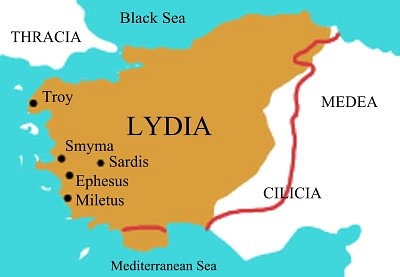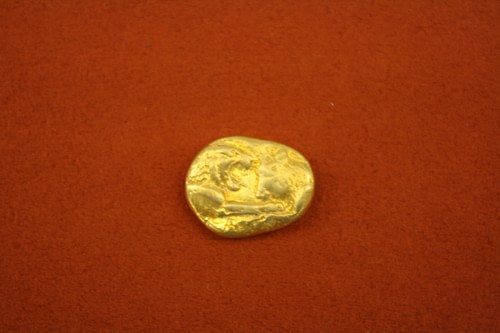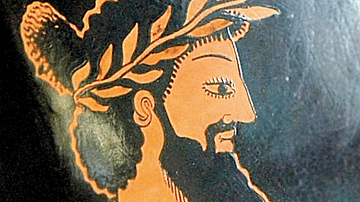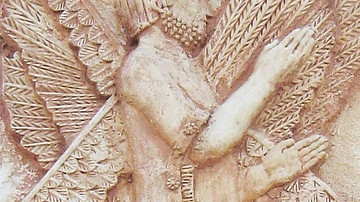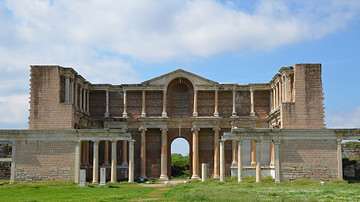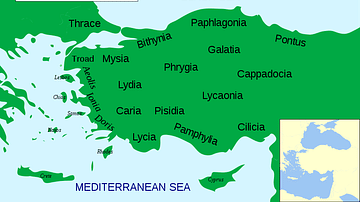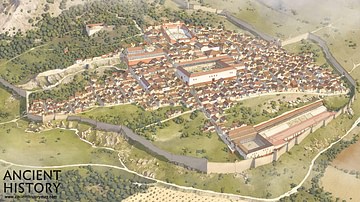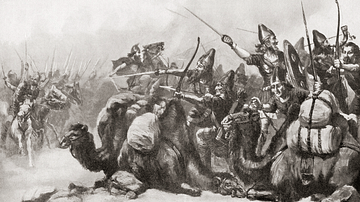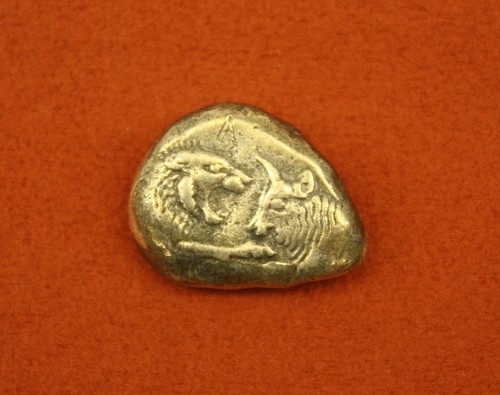
Lydia was a region of western Asia Minor which prospered due to its natural resources and position on trading routes between the Mediterranean and Asia. The Kingdom of Lydia flourished in the 7th and 6th centuries BCE and expanded to its greatest extent during the reign of Croesus, famed for his great wealth. Lydia then became a Persian satrapy with its capital at Sardis. Conquered by Alexander the Great, Lydia was absorbed into the Seleucid Empire in the Hellenistic Period. Part of the Roman province of Asia, Lydia was made a separate province in the 3rd century CE.
Geography & Resources
Lydia, a name derived from its first King Lydus according to Herodotus but also known as Maeonia, occupied the western region of Asia Minor (Anatolia) in the Hermus and Cayster Valleys. Its neighbours were Caria (south), Phrygia (east), and Mysia (north). The cities located on the coast such as Smyrna and Ephesus were intermittently under the control of Lydia. As a meeting point between East and West Lydia became an important trading area which further enriched the kingdom already blessed with fertile land and natural resources, especially silver and gold from the Pactolus River. Lydia was also noted for its production of fine textiles and leather goods.
Lydia had its own language, of Indo-European origin and with an alphabet similar to Greek, which was in use until the 1st century BCE. The limited number of surviving inscriptions have resulted in only a partial decipherment of Lydian. Lydia's art, culture, and religion also reflected its geographic location and displayed both eastern and Greek influences.
The Mermnad Dynasty
Lydia, with its capital at Sardis, rose to its greatest prominence under the reign of the Mermnad dynasty (c. 700 - 546 BCE). The first king of the dynasty was Gyges (r. c. 680 – 645 BCE) who can claim the fame of being the first named tyrant in Greek records. The fourth king was Alyattes (610 - 560 BCE) who, like Gyges, fought the neighbouring Cimmerians but with more success and acquired parts of Ionia. Both Gyges and Alyattes' impressive tombs were laid at Bin Tepe and gained fame for their size in antiquity.
Croesus
Lydia thrived even more under the last Mermnad king, Croesus (r. 560 - 546 BCE), who conquered the Greek cities on the coast and expanded the empire to control all of the Anatolian plateau up to the river Halys (modern Kizilirmak) and thus border the Persian empire. Croesus maintained friendly diplomatic relations with the Greeks and he even gave financial aid to the rebuilding of the Temple of Artemis at Ephesus and made dedications at Delphi (where he famously misinterpreted the oracle's proclamation that an empire would fall, alas, it was to be Lydia and not, as Croesus thought, Persia).
The Greeks told of the legendary wealth of Croesus, probably based on the fact that Lydia was one of the first states to mint coinage, perhaps in the reign of Croesus' father Alyattes. These roughly made coins were small lumps of electrum (an alloy of gold and silver) or pure silver and gold which were stamped with a design of a lion and an ox. Croesus' expansion of Lydia came to an abrupt end when the Persian king Cyrus II defeated him in 546 BCE in a battle at Halys. Croesus was thrown on a funeral pyre with legend claiming the king was saved by Apollo and taken to the mythical land of the Hyperboreans while Sardis was taken and Lydia became, thereafter, a Persian satrapy. During the 5th-century BCE Persian Wars, Sardis was sacked by the Ionians in 498 BCE and used as a base by Xerxes prior to his invasion of mainland Greece in 480 BCE.
Hellenistic & Roman Period
Lydia was conquered by Alexander the Great in the 4th century BCE. In the Successor Wars, it first came under the control of Antigonus I and then became a part of the Seleucid Empire in c. 280 BCE. Sardis continued its role as an important regional capital and benefitted from a re-building programme which included a temple to Artemis, a theatre, and gymnasium. In 189 BCE at the Battle of Magnesia between Antiochus III of Syria and Rome, the latter, with the help of Eumenes II of Pergamon, won a decisive victory. A part of the Roman province of Asia from 133 BCE, Lydia was made a separate province by Diocletian in the 3rd century CE and Sardis was given the honorary title of metropolis.
Life in Roman Lydia was blighted by unrest, the imposition of an administrative Roman ruling class, heavy taxation, and, in 17 CE, a devastating earthquake which destroyed 12 cities. The prosperity of the region improved again in the 2nd and 3rd centuries CE as indicated by an increase in the minting of coinage and imperial visits from emperors Hadrian (124 CE) and Caracalla (215 CE).
